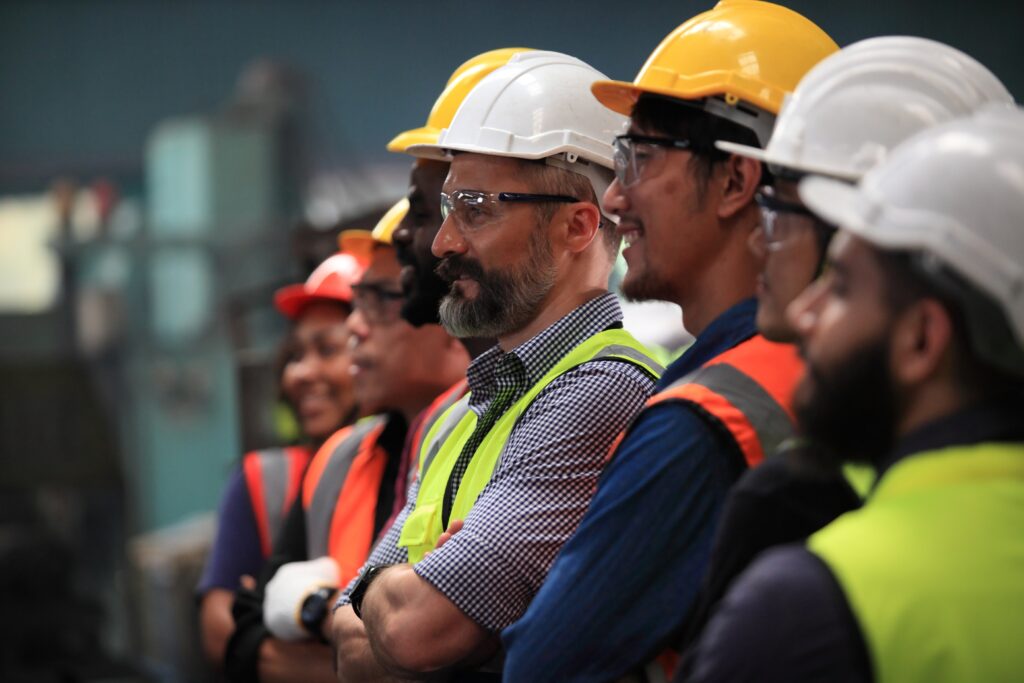When work is a pleasure, life is a joy! When work is a duty, life is slavery.
– Maxim Gorky
The truth is, we spend most of our daytime hours at work. There are simple tweaks and changes that can be made to make life at work more comfortable and keep productivity at it’s peak. We call this Ergonomics.
Ergonomics in it’s simplest form, is maximizing the usability of any object. In an office environment, good ergonomics can make a tremendous difference to the quality of your staff’s day, which impacts the quality of their work and happiness.
Poor posture, ill working conditions result in more sick days, poorer productivity, higher chances of injury (In an office, this is usually back or neck pain) which ultimately results in greater expense to the company.
This can all be done by having an Ergonomic Risk Assesment done and making simple tweaks.
Office Ergonomics – How to avoid back pain at work
It is commonly believed that correct posture is the key to avoiding back pain while at work. Without doubt, good posture affects your overall comfort and health. However, posture change is as important as posture correctness. Simply getting up periodically through the day and having some movement has a huge impact.
People who sit all day tend to have back problems. But so do people who stand all day. One possible solution is to have an area with standing tables where staff who spend most of their day sitting can get up and have a ‘standing break’ for short periods of time.
How to set up workstations for maximum productivity
The workstation is where staff will spend the bulk of their working day, which makes it a priority when planning for comfort and productivity.
Standard workstations are usually set to approximately 74 cm – this rarely suits everyone. Desks that are adjustable for height could be a viable solution. If this is not possible, something as simple as height adjustable keypads can make a difference.
In order to effectively design a workplace for maximum output, we need to ask the question, ‘What will each employee be doing at their workstation?’
Employees who spend all of their working hours on a computer will do well with a simple rectangular layout. If handwriting and computer input is required, they will find their work flow easier with a curved L desk. Avoid 90 degree corners as they tend to create increased demand for reaching.
Will multiple screens be used? If so, allow enough room for proper setup.
If multiple screens will be used the workplace should allow enough room for proper setup.
What about keyboard trays?
Keyboard trays are unnecessary with adjustable work desks. If the desk is a standard height, keyboard trays should be wide enough to support both the mouse and keyboard on one level surface. Reaching to the desktop to operate the mouse is not ergonomic.
Is storage required? Pedestals or drawers under the work area may restrict leg clearance. Cupboards positioned over the work area can promote reaching if materials are accessed regularly.
It’s all about the chair
If you’re going to spend money on only one thing, it should be the chair. Office seating is the best place to spend money with the highest return on investment in regards to comfort, spinal health and productivity. Look for a good quality, fully adjustable ergonomic chair that allows movement and ease of adjustment. Back support is key. The chair should first and foremost provide sufficient lumbar support in an adjustable height and tilt back rest. Buy the best you can afford.
You’d think buying a chair would be fairly straightforward, but there are several things to consider. Fabric or mesh? Dynamic or static? Armrests or no armrests? Will more than one person be using the chair?
The right answer varies (except regarding dynamic vs. static… dynamic is always the winner). In a warm environment fabric chairs are the best way to go. Armrests are ideal IF they adjust and do not restrict proper set up. They are also perfect for meeting rooms. If more than one person will be using the chair, look for the most adjustment possible to accommodate all sizes of people.
What about computer equipment?
Once again, it is important to understand what each individual employee will be doing. What software will they be using? Do they use touch screen technology? If so, standard setup will encourage awkward postures such as reaching.
Will staff spend hours on the mouse scrolling through documents or typing? This will help to understand if the number pad on a keyboard is an irritating addition or a necessity. Keyboards that come with number pads can cause staff to reach for their mouse over the number pad – resulting in awkward static shoulder postures. If the employee is going to be spending the bulk of their time typing, a keyboard with a natural layout that separates the keys and promotes neutral wrist postures is perfect.
How big a monitor do employees really need? Bigger is not always better. For multiple users, monitors should be mounted on adjustable arms. This allows employees to position the height and avoid awkward neck postures.
Let there be light!
Lighting is another issue worth consideration.
Envision yourself in a fancy restaurant with dim lighting – how do you typically position yourself when trying to reach the menu? Head bent forward? Squinting your eyes? This happens in workplaces too. If lighting is poor, workers spend more time with heir neck bent down trying to read documents. This leads to muscle strain and fatigue.
In contrast, too much light can lead to glare, which causes eye strain, dry eyes and headaches. Picture yourself on a patio on a sunny day trying to read.
So how can we provide good lighting?
Some guidelines include:
- Incorporate natural lighting where possible
- For tasks that require attention to fine detail, provide task lighting
- Position computer monitors perpendicular to windows to reduce glare
- Position seating so that windows are neither directly in front of or directly behind the workstation.
- Adjust the brightness of computer screens to align with the lighting in the room.
Once again, in order to provide the best ergonomic solution, it is important to understand what the employee will be doing and how they will spend their day. Staff who spend all their time on the computer require much lower light levels than those who will be engaging in meetings, reading and paperwork.
Now what?
In this article, we’ve given you a number of tips on how to provide an efficient, comfortable workplace with the goal of maximizing productivity and employee satisfaction (while minimizing sick days and the expense of missed days… which brings it’s own kind of sickness!)
However, the best results are unique to the various work conditions and goals of each company. For the best results, have an Ergonomic Risk Assessment done. At Ayrton we can work with you to review the current work design and organizational factors in your workplace, identify ay ergonomic equipment requirements and provide on the spot advice and assistance to attain optimum layout of the workstations. This varies from computer workstations to machine set up on a production floor. There are minimum legislative requirements and we can help assure you’re workplace meets them. Applying ergonomics in the workplace reduces the likelihood of accidents, reduces the potential for injury and ill health such as aches and pains of the wrists, shoulders and back, and improves performance and productivity. Get in touch today!
(021) 421 0331
Info@ayrton.ie



